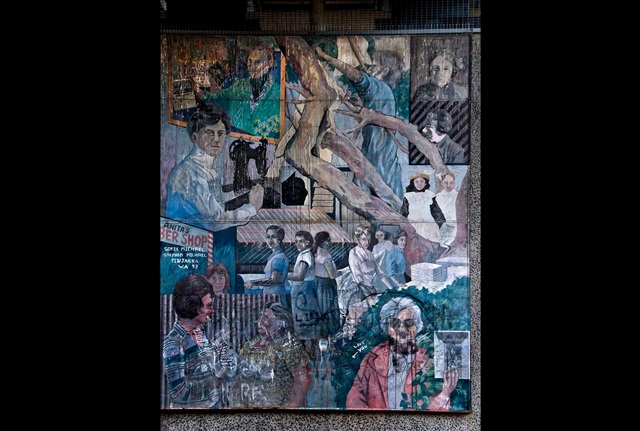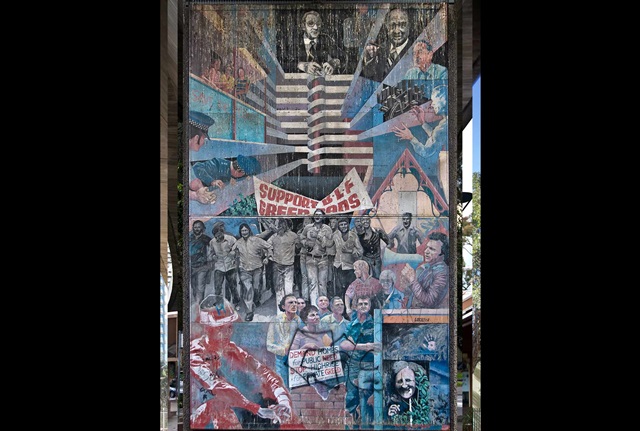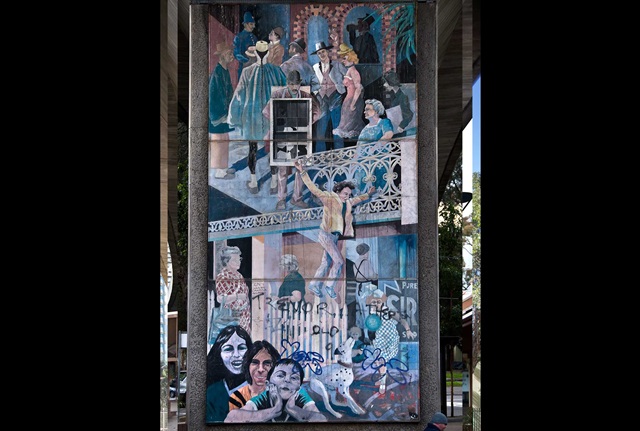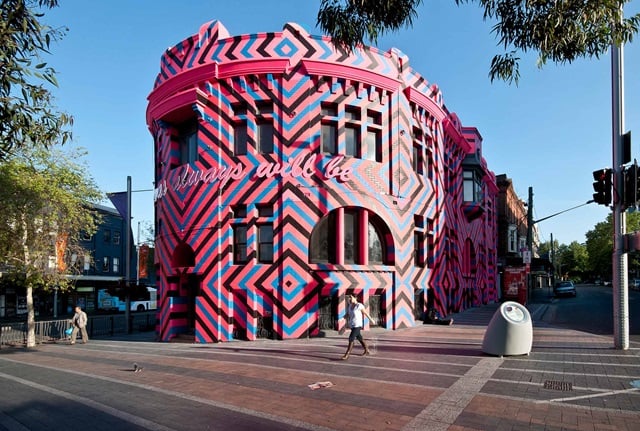


Designed and painted by local artists Michiel Dolk and Merilyn Fairskye, these 8 murals on the railway pylons at Woolloomooloo preserve and celebrate the suburb’s unique history.
Artwork description
Woolloomooloo was traditionally a suburb for waterside workers and their families. In the 1970s the area was under threat from developers that wanted to construct high-rise developments. Residents refused to leave and with the support of their unions managed to save many homes.
The Woolloomooloo Mural Project was conceived by activist artists Merilyn Fairskye and Michiel Dolk in 1982 to celebrate the suburb’s people and history. There were a total of 16 murals commissioned by the Woolloomooloo Residents Action Group. The murals were originally intended to last 10 years and have now been on display for more than 40 years.
With extensive consultations, 8 of the 16 murals were identified as being of high historical significance and aim to become an active link to people’s memories of the area.
Murals
– Michiel Dolk and Merilyn Fairskye
Artists
The Woolloomooloo murals were designed and painted by local artists Michiel Dolk and Merilyn Fairskye.
Wanting to preserve and celebrate the suburb’s unique history, the artists approached the Woolloomooloo Resident Action Group with the idea in 1979.
Before putting paint to panel, Fairskye and Dolk spent a full year piecing together the real story of Woolloomooloo from archives – and the memories and photos of the families who lived it.
Hundreds of donors and community groups raised funds for the materials, but the artists worked for free. The murals took 3 years to create.
Conservation



Major conservation work was undertaken on the murals between 2009 and 2013.
In the early work stages the conservators met with the artist Merilyn Fairskye to discuss her desired outcomes for the paintings. During this consultation Fairskye reiterated that no retouching of the paintings be conducted.
The artists wished that the graffiti become a part of the history and fabric of the paintings. An understanding was reached that the most disfiguring and distracting elements could be reduced so the panels could be read more coherently.
Treatment included cleaning the paintings and reattaching paint. The panels were straightened, punctures repaired and the outer frames were reconstructed. Selected graffiti was removed and bird roosting deterrent spikes were installed.
Conservators: Sydney Artefacts Conservation and Artcare.







